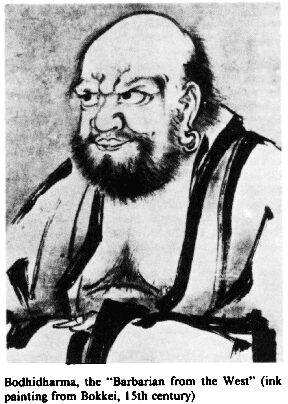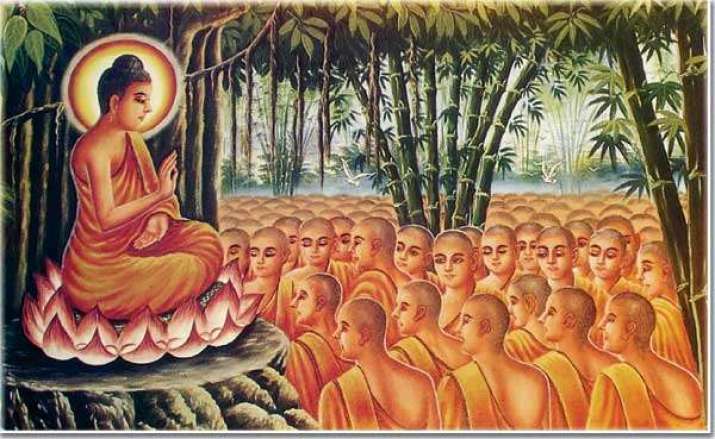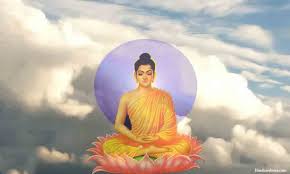Mumonkan, Mu Mun Kwan, Wu Men Kuan, Wu-men kuan, Wu-men-kuan, Wumenguan (Gateless Gate, Gate of Gatelessness) represents a collection of 48 koans, compiled and provided with commentaries and verses by Wu-men Hui-k’ai (Jap. Mumon Ekai). The text was first published in China, on the 5th Nov 1228, when Wu-men Hui-k’ai was a head monk at the Lung-hsiang monastery. The text was published in Japan as a part of the ‘Taisho shinshu daizokyo’ (Buddhist Canon published in the Taisho Era).
Mumonkan is usually translated as `gateless gate’ or `gateless barrier’ (mu – nothing, no, mon – gate, kan – barrier). The latter would suggest a barrier with no passage through it. However, the ideograph kan may also refer to a checkpoint on national or prefectural boundaries where travelers’ credentials are examined by police, so that a possible interpretation of Mumonkan could be `a checkpoint that is not blocked in any way.’ Hence, the title might also be translated as `open checkpoint.’
In 1230, the original volume, containing 47 cases, was enriched by Wu-liang Tsung-shou’s (Jap. Muryo Soju) with 3 verses on each of the Huang-lung Hui-nan’s (J. Oryu E’nan) ‘Three Gates’ (Three Barriers). These were written as an expression of Wu-liang’s gratitude for Wu-men’s visit to the Zuigan temple and his teishos on the Wu Men Kuan koans. In 1245, an epilogue to the volume was written by Wu-an (Jap. Mokyo). The classic edition includes a 49th case, composed in 1246 by Anwan (Cheng Ch’ing-Chih).
Mumonkan has an appendix titled “Zen Caveats” with one-line aphorisms dealing with Zen practice. The word zhēn means “caveat”, “warning”, or “admonition”, but it also has the meaning of “needle” or “probe” and is sometimes translated as “Zen Needles”. As with the main koans, each caveat challenges the Zen student’s attachment to dualistic concepts, of those especially related to Zen practice.
The general structure of cases within the koan collection is:
The Case
Commentary by Wu-men
Capping Verse by Wu-men
A Case can mean a barrier or a checkpoint. These cases were given to students to check where they were, and what they need, or are they ready to go through (checkpoint). Cases were also referred to as a barrier which was set up as an obstacle – a barrier – to test students and see where they were.
There are many complete translations into English. Of these, some are simply translations of the text, without any attempt at annotation or interpretation (like those done by Koun Yamada, Eiichi Shimomissé, Nyogen Senzaki and Paul Reps, Katsuki Sekida), and others, like the one done by R. H. Blyth, are accompanied by extensive interpretive commentaries on each case. Some say that Blyth’s translation is excellent, but his interpretations are highly individual and of an unorthodox kind. As a guide to Mumonkan and to Zen, his book must be read with some caution. The most recent version, Zen Comments on Mumonkan, contains a very good translation by Sumiko Kudo and valuable commentaries by Zenkei Shibayama. The general opinion is that the book is very good one. There is also a translation into German by Heinrich Dumoulin and a french one, done by Jacques Prestreau.
It seems that the translation of the text is extremely difficult since the text is full of subtle allusions and implications and so, no one translation can ever convey the whole meaning, so a comparison of different renderings can be a real help to the reader.
***
Zen has many classic texts, of which this work is one. The work consists of narrated relationships between ancient Chinese teachers and their pupils, illustrating means employed to sublimate the dualistic, outgoing, generalizing, intellectualizing tendencies of students in order that they might realize their true nature. The problems or inner challenges with which the masters confronted their pupils came to be called koans, and each of the following stories is a koan in itself.
The stories use slang freely to actualize the highest teaching, the seeing into one’s being. None of the stories make any pretense at logic. They are dealing with states of mind rather than words. Unless this is understood, the point of the classic will be missed. The whole intent was to help the pupil break the shell of his limited mind and attain a second birth, satori, enlightenment.
Each problem is a barrier. Those who have the spirit of Zen pass through it. Those who live in Zen understand one koan after another, each in his own way, as if they were seeing the unseen and living in the illimitable.
(Excerpted from Zen Flesh, Zen Bones Paul Reps and Nyogen Senzaki)
***
Zen has no gates. The purpose of Buddha’s words is to enlighten others. Therefore Zen should be gateless. Now, how does one pass through this gateless gate?Some say that whatever enters through a gate is not family treasure, that whatever is produced by the help of another is likely to dissolve and perish. Even such words are like raising waves in a windless sea or performing an operation upon a healthy body. If one clings to what others have said and tries to understand Zen by explanation, he is like a dunce who thinks he can beat the moon with a pole or scratch an itching foot from the outside of a shoe. It will be impossible after all.
In the year 1228 I was lecturing monks in the Ryusho temple in eastern China, and at their request I retold old koans, endeavoring to inspire their Zen spirit. I meant to use the koans as a man who picks up a piece of brick to knock at a gate, and after the gate is opened the brick is useless and is thrown away. My notes, however, were collected unexpectedly, and there were forty-eight koans, together with my comment in prose and verse concerning each, although their arrangement was not in the order of the telling. I have called the book The Gateless Gate wishing students to read it as a guide.
If a reader is brave enough and goes straight forward in his meditation, no delusions can disturb him. He will become enlightened just as did the patriarchs in India and in China, probably even better. But if he hesitates one moment, he is as a person watching from a small window for a horseman to pass by, and in a wink he has missed seeing.
The great path has no gates,
Thousands of roads enter it.
When one passes through this gateless gate
He walks freely between heaven and earth.
(from the introduction to the Mumonkan)
photo credit: weheartit




